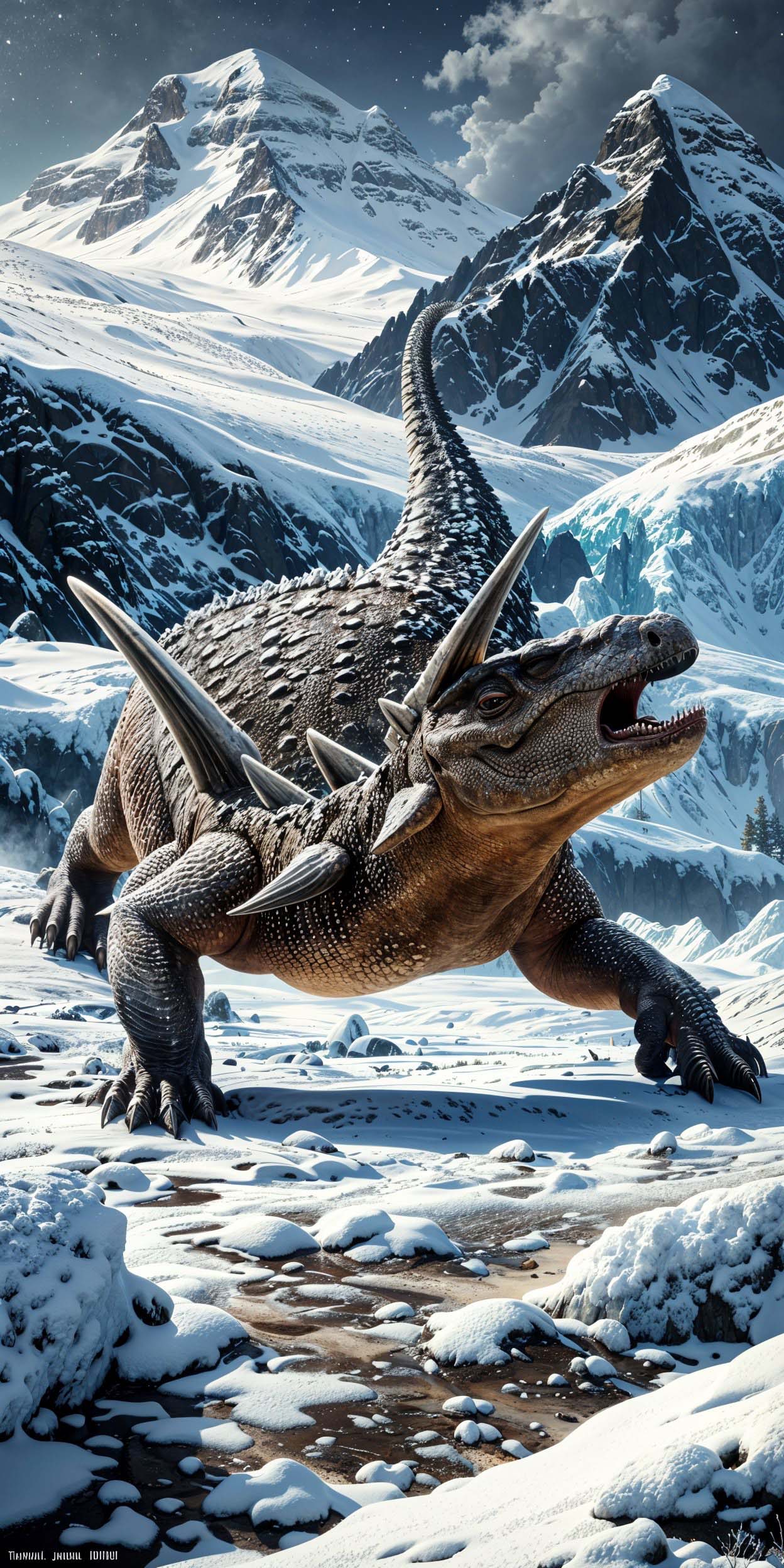The Antarctopelta
The Antarctopelta, also known as the Antarctic shield, is a herbivorous dinosaur that roamed the Earth during the Late Cretaceous period. It had a thick armor of bony plates covering its back, protecting it from predators. This dinosaur was quadrupedal, with a bulky body and a long tail for balance. It was estimated to reach a length of about 13 feet and weigh around one ton.

| Antarctopelta | |
|---|---|
| Size | Length: 13 feet (4 meters) |
| Weight | 2,000 lbs (907 kg) |
| Speed | 15-20 mph (24-32 km/h) |
| Key Strength | Thick bony plates for protection |
| Biggest Weakness | Mobility due to bulky build |
| Scientific Name | Antarctopelta |
| Family | Nodosauridae |
| Habitat | Land |
| Geography | Antarctica |
| Diet | Herbivorous |
| Lifespan | 60 years - 70 years |

The Antarctopelta
The Antarctopelta, also known as the Antarctic shield, is a herbivorous dinosaur that roamed the Earth during the Late Cretaceous period. It had a thick armor of bony plates covering its back, protecting it from predators. This dinosaur was quadrupedal, with a bulky body and a long tail for balance. It was estimated to reach a length of about 13 feet and weigh around one ton.
Fun Fact: Despite its formidable appearance, the Antarctopelta was a gentle giant, primarily feeding on vegetation such as ferns and cycads.
| Antarctopelta | |
|---|---|
| Size | Length: 13 feet (4 meters) |
| Weight | 2,000 lbs (907 kg) |
| Speed | 15-20 mph (24-32 km/h) |
| Key Strength | Thick bony plates for protection |
| Biggest Weakness | Mobility due to bulky build |
| Scientific Name | Antarctopelta |
| Family | Nodosauridae |
| Habitat | Land |
| Geography | Antarctica |
| Diet | Herbivorous |
| Lifespan | 60 years - 70 years |
Antarctopelta Matchups
We use AI to simulate matchups between the Antarctopelta and other animals. Our simulation considers size, strength, and natural predatory behaviors to determine the most likely outcome.
Antarctopelta: Diet, Predators, Aggression, and Defensive Behaviors
What did Antarctopelta eat?
Antarctopelta were herbivorous dinosaurs, meaning they primarily ate plants. Fossil evidence suggests they likely fed on ferns, conifers, and other vegetation found in their Antarctic habitat.
Did Antarctopelta have any predators?
As herbivores, Antarctopelta would have been preyed upon by carnivorous dinosaurs such as theropods like the Cryolophosaurus. These predators would have likely targeted young or injured Antarctopelta individuals.
Were Antarctopelta aggressive?
Based on their herbivorous diet and the structure of their fossils, it is unlikely that Antarctopelta were aggressive animals. They would have likely focused on feeding and protecting themselves rather than seeking out confrontations with other dinosaurs.
Did Antarctopelta fight?
While most dinosaurs engaged in some form of combat or competition, Antarctopelta likely did not exhibit aggressive behavior towards others of their kind. However, they may have engaged in minor disputes over resources like food or territory.
How did Antarctopelta defend themselves?
Antarctopelta likely used their built-in armor as a form of defense. Their thick, bony plates and spikes would have acted as protection against potential predators, making them a less appealing target.
What was the biggest weakness of Antarctopelta in a fight?
Despite their armor and defensive capabilities, Antarctopelta's biggest weakness in a fight would likely be their comparatively slow speed and limited agility. This would make them vulnerable to fast-moving predators that could outmaneuver them in a confrontation.
Fun Fact: Fossil evidence suggests that the Antarctic shield may have lived in herds, providing protection and safety in numbers.
Fun Fact: The name "Antarctopelta" means "Antarctic shield," referring to the thick armor plates that characterized this dinosaur's appearance.










